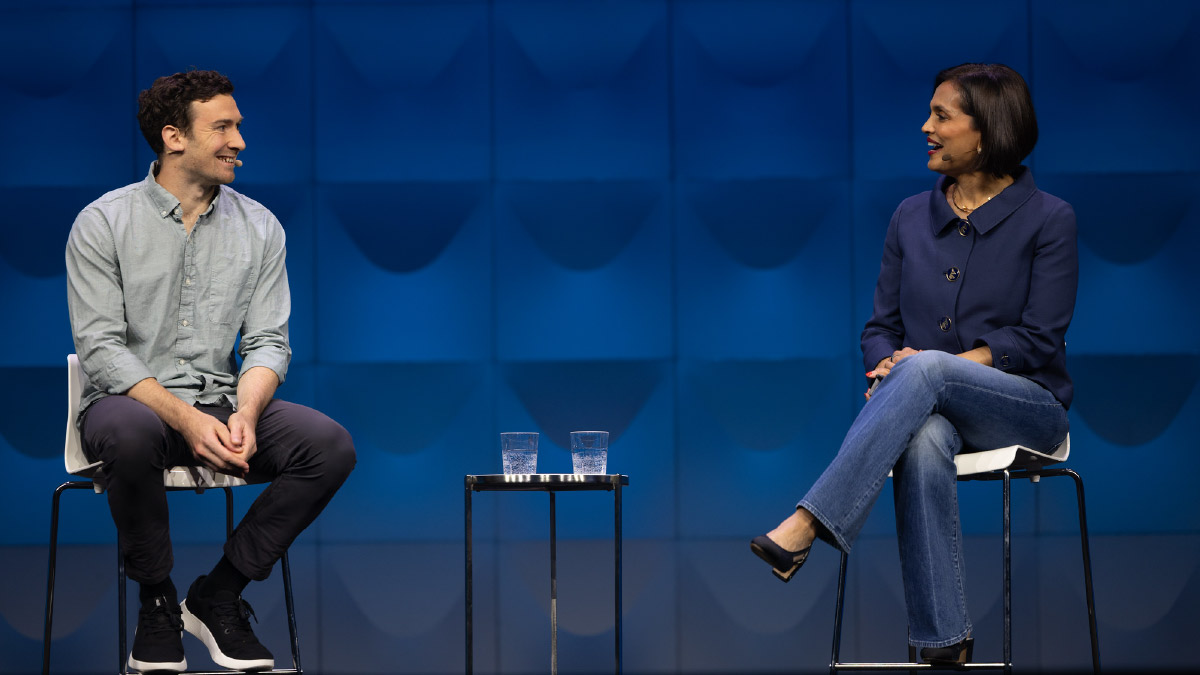Customer experience — often known as CX — is high on the list for digital transformation.
But here’s an often-overlooked catch: Not every customer values every experience, or every element of their experience, in the same way.
The process could even be compared to the stages of a personal relationship: each is highly individual and as much about emotions as logic.
So, the task of delivering a customer experience that’s great for everyone is difficult. CX is a broad heading, crossing multiple delivery channels and every aspect of a customer’s interaction with a company. Company processes, partners, and decisions on the back end can affect customers in sometimes surprising ways.
Getting it right at every stage is critical, as a Cisco survey on digital interactions and customer experience showed. Among 3,619 consumers across 12 countries, speed and convience were the chief drivers for seeking digital interactions.
But that doesn’t mean the other stages of the customer experience are any less important.
“In recent times, maybe the last five years, it started to encompass every interaction a customer has with a company,” said Shep Hyken, consultant and author of numerous books on customer service. “Electronic goods used to come in really boring packaging. But how cool was the packaging of your iPhone or iPad? Even that is part of the customer experience.”
And as the Cisco study showed, it also extends to physical locations — banks, retail stores, government buildings, etc. The speed and efficiency of digital interactions have, in fact, raised the bar for the level of quality expected in physical interactions.
But how can an enterprise figure out what each customer wants at every stage, and then prioritize its CX improvement efforts to get the best return on this hard work?
CX consultants and frameworks already abound, but since businesses often refer to “relationships” with their customers, a different way to frame the discussion could come from the world of personal relationships. Take, for example, Gary Chapman’s 1992 bestseller, The 5 Love Languages.
Chapman posited that people in a relationship have a primary “love language” — one of five types of interactions they value more than others: quality time, acts of service, physical touch, words of affirmation, or receiving gifts.
Can businesses apply this thinking to help guide customer experience improvements?
The payoff for a focused effort can be not just profitable, but it's existential.
This was borne out by Cisco’s study. After a positive experience, 61 percent will use the product or service more, while 44 percent will consider making a recommendation to others. At the same time, a poor experience may result in a second attempt for the lucky ones (41 percent). But 23 percent will try a competitive product.
Hyken points to the positive example of Southwest Airlines, which made a conscious decision to not offer a traditional first-class seating area — which is valued by many fliers, but not the customer segments Southwest wanted to target. Instead the airline grew rapidly by addressing those customers’ desires for simplicity and speed.
As Hyken noted, “If you try to be all things to all people, you wind up being 'nothing to nobody'.”
What Do Customers Want? 5 Love Languages, Translated
According to Chapman’s book, the five primary love languages in relationships include:
- Quality time
- Physical touch
- Acts of service
- Words of affirmation
- Receiving gifts
Everyone likes all these things, Chapman argued, but each person tends to find one more meaningful than the others. In a relationship, one person might thrive on compliments (words of affirmation) while the other, who values acts of service, might respond to the same compliments with “That’s nice, but could you take out the trash already?”
Translated to customer experience, these languages could match up to familiar tactics such as:
- Quality time = Efficiency and simplicity
- Physical touch = Consistency across touchpoints
- Acts of service = Serving the whole customer
- Words of affirmation = Personalization
- Receiving gifts = Incentives
While not an exhaustive list of customer needs — it’s a starting point.
Every customer would like all these qualities in their interactions with a company. But even the most customer-focused organization will find it difficult to excel in every area — and as Hyken said, it can be counterproductive to try.
Efficiency and simplicity mean removing friction from anything the customer needs to accomplish. In the Cisco survey, convenience and speed were the top advantages of digital interactions. Hyken agrees this value is perhaps the largest subset of customers, and many companies have responded successfully with 24-hour self-service options available by web or phone.
The next level is to simplify those interactions by providing the customer with information that more closely matches their intent. Emerging technologies could help. AR, VR, and wearables have minimal penetration today, but large growth is expected in the future. And artificial intelligence can power a new dimension in customer understanding, as well as efficiency at every stop of the product and customer journey.
Consistency across touchpoints has been a focus for retailers in particular, as consumers look to shop in-store, buy online, receive at home and return in-store.
In Cisco’s study, for example, around one-third of consumers reported using their mobile devices in stores, banks, and educational institutions. Yet use of mobile apps was the fastest growing vehicle for digital interactions. So, seamless connections between physical to digital and back are paramount.
This is also where back-end details most often have undetected effects. In past times, Hyken said, a warehouse employee who shipped orders might not have been thought of in terms of customer contact. But a mis-packed order completely undercuts an otherwise great customer experience. And some percentage of incorrect packing might result from how pick lists are organized, or from problems in the warehouse workflow.
Again, it’s critical to get every stage of the customer journey right. In Cisco’s study, respondents cited advantages to each type of interaction. While convenience and speed reign supreme in the digital realm, traditional interactions are by no means being displaced. Human connection, shared expertise, and trust were among the top preferences cited for human, face-to-face interactions. And in retail, healthcare and government, traditional interactions still outpace digital.
Serving the whole customer is sometimes regarded as the province of so-called mission-driven companies such as Patagonia, which sells clothing but is involved in environmental issues.
But any enterprise can consider helping the customer with tasks outside of what the company’s product or service does. This might take the form of web content that helps a customer do other parts of his job or advance her career. Or it might be a bank-supplied app that grows mortgage applications by helping customers find a house in the right neighborhood.
These tactics supply customer value and create the impression for customers that “the company really gets me.”
In Cisco’s survey, 43 percent were willing to share personal information with “a brand I trust.”
Successful personalization goes well beyond addressing Frank’s emails to “Dear Frank.”
On the consumer side, meaningful personalization requires understanding the individual’s buying, usage, and service patterns. According to the Cisco study, this depends a lot on the type of interaction, as the expectation for personalization for the in-person experience doubles compared with the digital ones.
But don’t rule out personalization in the digital realm. That’s what makes growing subscription-based businesses like Dollar Shave Club tick, Hyken said. “Right about the time your supplies are running out, the next package arrives.”
Rachael McBrearty, chief customer officer at LeanData, noted that in B2B there are two dimensions to personalization. “Having that holistic understanding has to be a combination of insights about the company and the individual,” she said.
In fact, many cases require even more layers. Lori Scanlon, vice president of marketing for the healthcare company Onduo, previously headed customer experience at a company that made workflow software for medical professionals. In that setting, she said, the buyer of the software was quite different from the ultimate end-user. Customer experience needed to understand and address both with different types of support.
Incentives are self-explanatory — and tempting because they look like a straightforward way to move the needle on sales or satisfaction. However, Scanlon says, “seller beware.”
“Building trust and value is the foundation," she insists. “Incentives can be used on top of that in a very positive way, but not as the de facto way of motivating customer behavior. I want you to trust me, so I want to provide content, insights, value, whatever I can that’s not just a commodity or ‘thing.’”
Security, of course, is key part of that foundation of trust. In Cisco’s survey, In Cisco’s survey, trust in an entity or brand was the top driver for sharing personal information, while “knowing that my information is secure” was the top driver for a satisfactory experience across traditional and digital.
Once trust is established, companies can go the extra mile in providing value and convenience. In Cisco’s survey, respondents had the highest comfort level with digital interactions that provided clear customer benefits, including providing real-time technical support based on status of devices, accounts, etc.; sending notifications of service outages; and offering products based on previous purchases.
While current adoption is perceived to be somewhat low, respondents across industries expect smart sensor technology (Internet of Things), biometrics, and artificial intelligence to impact future interactions.
Getting It Done
Knowing the right language to speak to your customer is essential, and judging by the stream of headlines in the press, businesses have gotten customer-experience religion. Of course experienced executives know that delivering on those experiences can require a lot of work on the back end.Hyken said that metrics applied judiciously to leadership-level employees can help drive that work forward.
“I interviewed an American Express executive, who said part of his bonus is based on Net Promoter Score survey results — how the call center is doing their job.”
“When upper management is accountable for what is happening at the front line,” he added, “they better be hiring right and providing the people with the right tools across the board.”
The biggest key to determining where to focus CX improvement, experts agreed, is a matter of hard work toward understanding the customer base.
Artificial intelligence and machine learning could accelerate this understanding. “If I call customer support, the system ought to be able to tell the agent, ‘This is a repeat customer, they’re just like this thousand other customers.’ And so we can predict the next question they’ll ask or the next product to recommend,” Hyken said.
In Cisco’s survey, AI was among the top technologies expected to impact future interactions and raise understanding of customers. But it, and other emerging technologies, also raised red flags with consumers (see Figure X.)
In short, new technologies and reams of customer data don’t automatically lead to right actions.
McBrearty added that some companies lack the appetite for the work it takes to narrow down customer types to the right workable number — which happens to be around five.
“You have to get to this set of archetypes,” McBrearty said, “ideally not more than four or five. This is critical for prioritization. The more complicated it is, the more likely that you didn’t finish the job.”
Ultimately, said Scanlon, delivering customer experience “is not just about setting up a function and owning it. Any group can have the title, it’s about orienting all employees around the question ‘How do we create the value for the people we’re serving?
Security: The Foundation of Customer Trust
Security, of course, is a foundational aspect of customer experience and expectations.In Cisco’s survey, 52 percent said they would share personal information after trust is established, while “knowing that my information is secure” was the top driver for a satisfactory experience.
Once trust is established, companies can go the extra mile in providing value and convenience. In Cisco’s survey, respondents had the highest comfort level with digital interactions that provided clear customer benefits, including providing real-time technical support based on status of devices, accounts, et cetera; sending notifications of service outages; offering products based on previous purchases.
While adoption is perceived to be low today, respondents across industries expect smart sensor technology (Internet of Things), biometrics, and artificial intelligence to impact future interactions.




